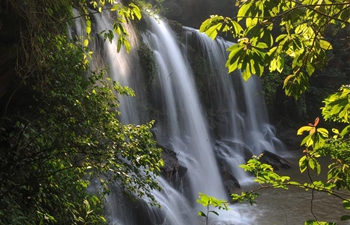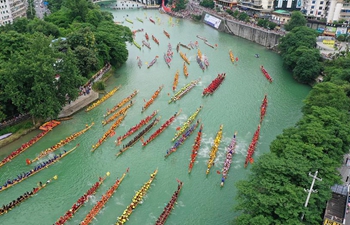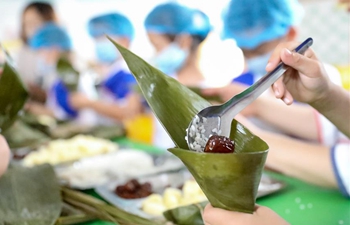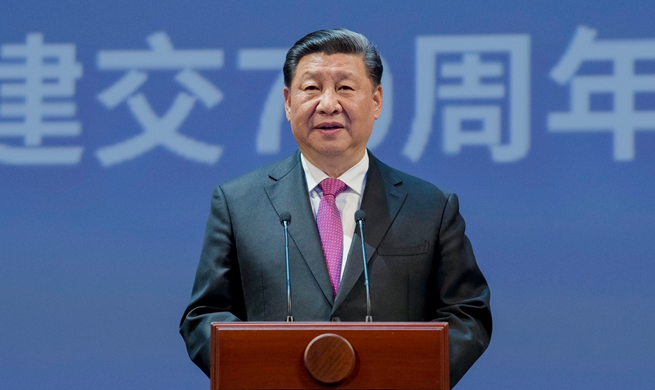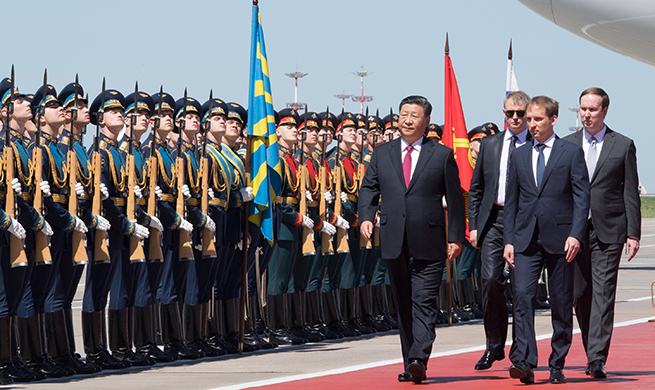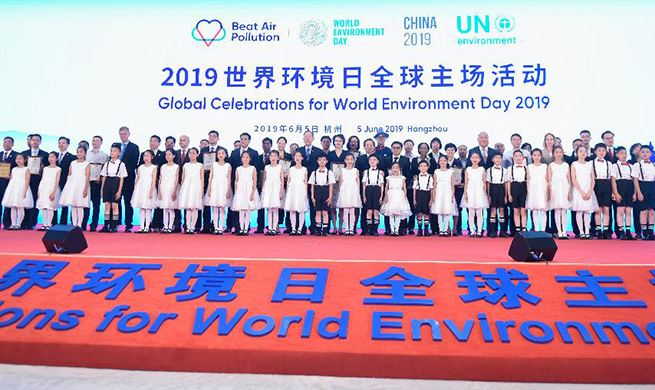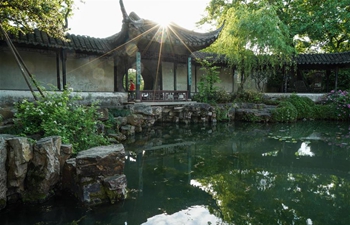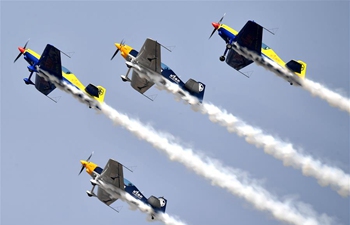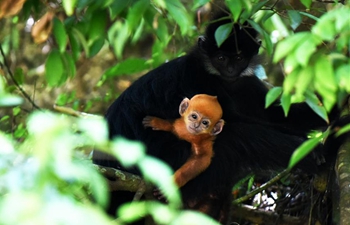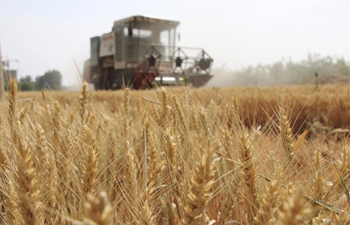By Zhou Shengping, Shristi Kafle
KATHMANDU, June 6 (Xinhua) -- Calls for mutual learning and understanding are of great significance after congestion caused multiple fatalities this climbing season on the world's tallest mountain.
Nepali climbers who scaled from the north face of Mt Qomolangma, also known as Mt Sagarmatha in Nepal, went through a similar experience of traffic jams during the deadly spring season of 2015.
34-year-old Kalpana Maharjan, a Nepali journalist, who stood atop the highest mountain on May 23, 2018, did the same successfully from the north face on the same day in this spring season, when traffic congestion was at climax in the southern face.
"I faced traffic jam for at least three hours on the Tibet side too. There was a situation when it was difficult to calculate the amount of oxygen needed to get to the top and back to the base camp," Maharjan told Xinhua upon her return to Nepali capital this week, adding that her estimated oxygen had almost finished at the top, creating a terror for a while.
Nepal's Department of Tourism issued a record number of 381 permits to climbers this year, while Tibet side permits at least 156 climbers to conquer Mt Qomolangma.
Out of these, at least 250 climbers with same number of guides had reached to the summit from Nepal on May 22. Over 120 climbers and their guides summited from Tibet on May 22 and 23.
Jeevan Shrestha, working for the Himalayan Database, a non-profit digital and publisher of the record of mountaineering in the Nepal's Himalayas, said that in one sense traffic jams are inevitable in both Nepal and China's sides of the highest peak.
His opinion is echoed by Nima Namgyal Sherpa, an expedition doctor who has been running an expedition company for nine years. According to Nima, even if the number of climbers in one season is reduced to 200-250 which is relatively common, they might still jam the peak in a similar way as the weather window can be quite short.
The short weather window that is reiterated by defensive Nepali government officials as the one major congestive reason in the mountain saw eight dead and one missing in southern side and two dead in northern side.
According to Temba Tsheri Sherpa, a veteran climber and an operator of expeditions from both sides, however, the short weather window was nothing than a scapegoat of inexact weather forecast, which directly caused impatient climbers to throng into the same place on the same time.
"The weather report is not accurate this time as it claims that there is a favorable window only for two days. But in reality, climbers could ascent up to a week later as well and the weather was still fine," Temba, Managing Director at Sherpa Khangri Outdoors, shared with Xinhua recently.
Ang Tshering lama, an international mountain guide who runs Angs Himalayan Adventure, also claimed that climbers ascended to the top of the peak both before and after the major two days of traffic jam and they were still safe.
There were at least three favorable windows this season from second week to the end of May, but unfortunately, majority pushed for summit on two particular days, experts said.
Rabindra Maharjan, who has been working in mountaineering sector and also runs an expedition company, claimed that there is no condition when one can depend upon only one weather report for such risk-filled adventure.
"This time, I was following three satellite reports including of Indian, Swiss and American which had predicted perfect weather for two days. Based on similar reports, most of the climbers pushed for summit without giving a second thought."
Rabindra is a key person to help Kalpana scale the summit from Tibet side this year, who now is trying to apply for a world record as a female journalist who climbs Mt Qomolangma from both sides for the first time.
Generally, the weather sites which might be both paid and unpaid types forecast for temperature, wind speed, humidity, precipitation, and cloud and snow condition among others. Though Nepal has Meteorological Forecasting Division, it lacks own satellite, compelling climbers and agencies to depend upon foreign weather reports.
Expedition agencies suggest that there is a need of regular communication and cooperation between the authorities of Nepal and China to minimize casualties.
According to them, exchange of information regarding weather reports and other issues between the north and south sides of the mountain is necessary. The close partnership between the government bodies will not only generate more business and revenue through mountain, but also can better the situation of Mt Qomolangma.
Climbers and Sherpa guides are of view that both sides can learn from each other in many aspects in order to conduct quality and safe expeditions. They shared that since instant rescue operations through helicopters are possible only from Nepal side, it would be easier if such service was possible in Tibet side as well.
"From the northern side, Nepal can learn about the limitation of permits, mobilization of single liaison officer and efficient management," said Nima Tenji Sherpa, a guide at Kaitu Expeditions, who has climbed Qomolangma for eight times from both sides.


